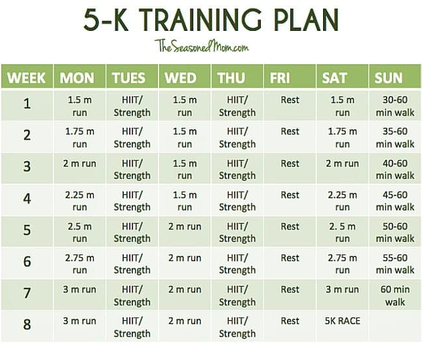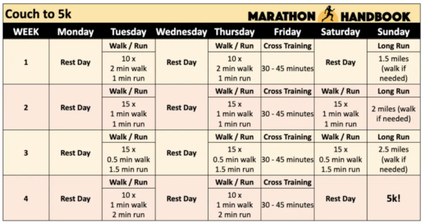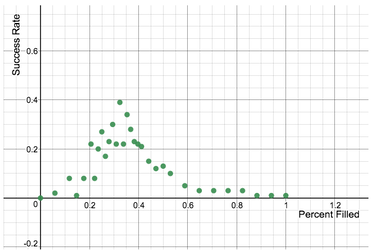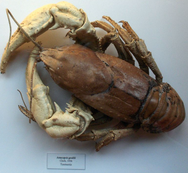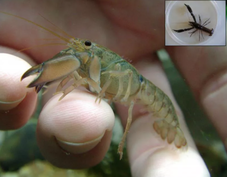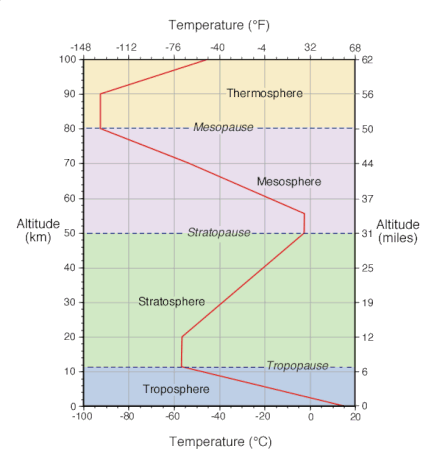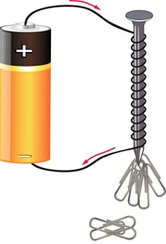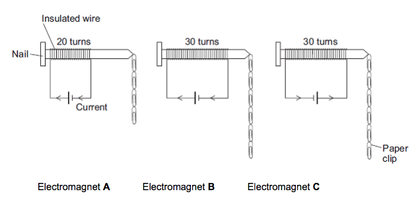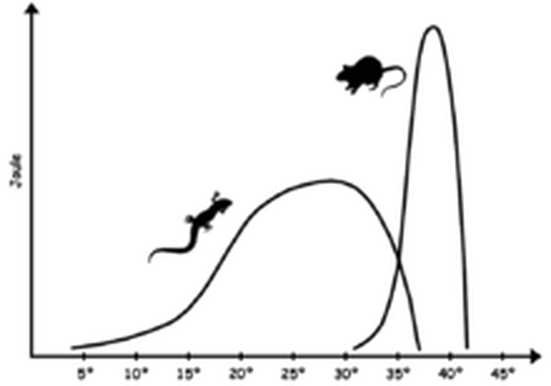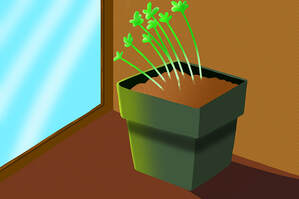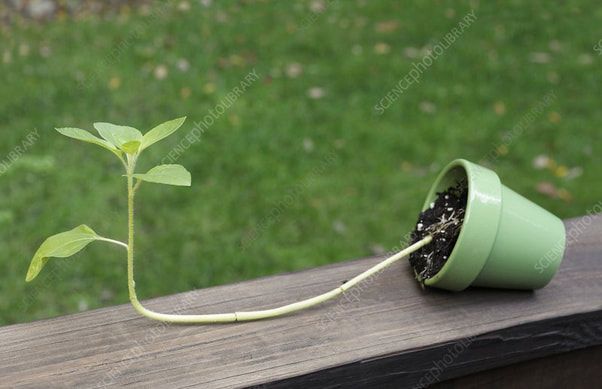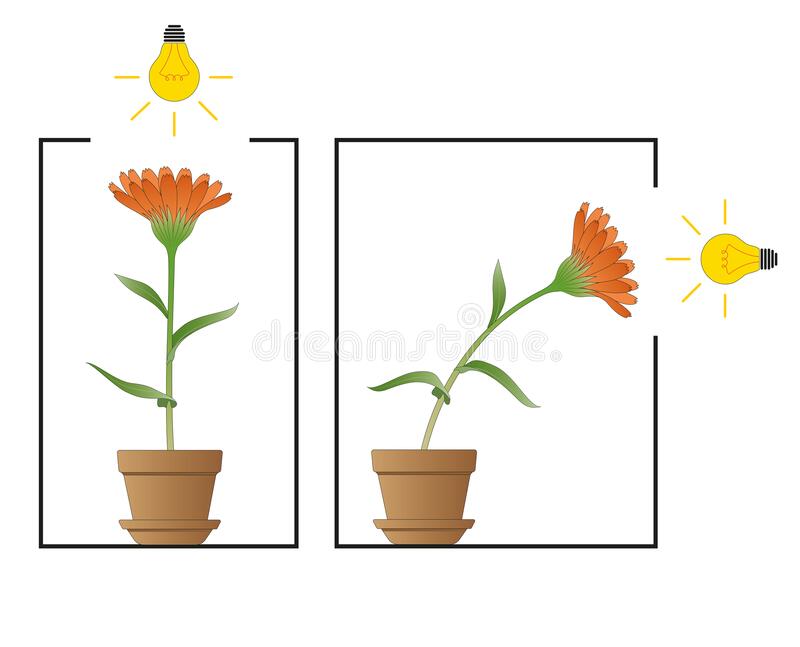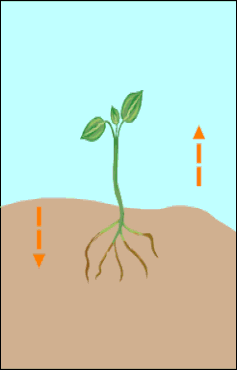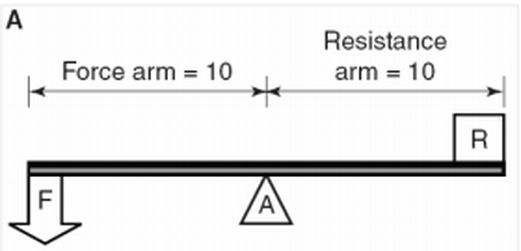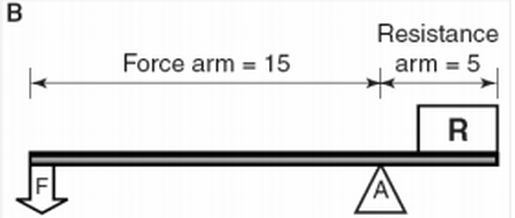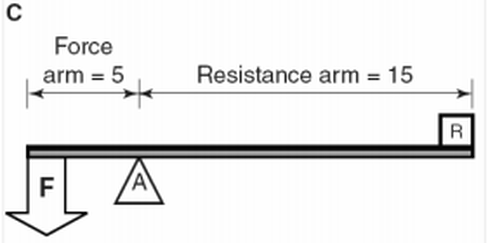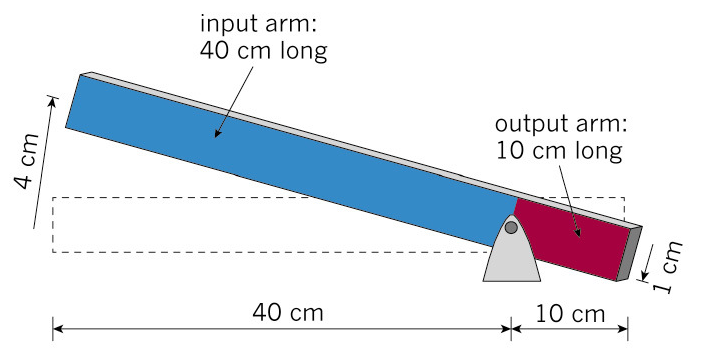4th Grade SCREADY-Science Testing Info
2021 SC College and Career Ready Science Standards
2014 Standards Testing Information
|
6th Grade SCREADY-Science Review
Test taking tips:
1. Take your time - no need to finish first! 2. Read each question carefully. 3. If there is a picture, chart, or graph, study it! 4. Answer the question in your mind before reading the answer choices to prevent confusion. |
Interpreting Charts and Graphs is an Essential Science Skill
|
Below you see 2 different 5K training plans. How do the 2 compare?
|
Bottle-Flipping Experiment
This experiment started with an argument in class about the optimal amount of water in a bottle for flipping. Should it be 1/4 filled; 1/3 filled; Just below 1/2? We decided that we would have to try it, so we designed an experiment. We considered variations like skill of tosser, variations in bottles, height of the tosser, etc. We started with 32 bottles filled to various levels. We flipped a total of 4,220 times. Here is a graph of our data.
Borrowed from https://blog.mrmeyer.com/2016/i-was-wrong-about-bottleflipping/ |
Taxonomy Review
|
Crayfish, crawfish, crawdads, or mudbugs may be an animal you recall studying in 3rd grade. They are decapods (have 10 legs) and are related to lobster and shrimp. There are over 400 species of crayfish. Watch this short video. |
|
|
Largest Species of Crayfish: Tasmanian Giant Freshwater Crayfish |
Smallest Species of Crayfish: Eastern Swamp Crayfish |
12. What do K, P, C, O, F, G, and S stand for?
13. Do you have a mnemonic to remember this in order?
14. What are the different kingdoms you studied in 6th grade Science?
15. Are crayfish vertebrates or invertebrates?
16. Can you think of some animals that may be arthropods, but not crustaceans?
17. Name some other crustaceans.
18. How many taxonomic categories do the largest and smallest crayfish share?
19. What species is the Tasmanian Giant Freshwater Crayfish? (full species name)
20. What species is the Eastern Swamp Crayfish? (full species name)
21. Many people notice that crayfish resemble lobster. Below is the full taxonomy of the Maine Lobster -
the lobster served by Red Lobster restaurants. K: Animalia P: Arthropoda C: Crustacea O: Decapoda F: Nephropidae G: Homaris S: H. americanus At what taxon does it begin to differ from crayfish?
13. Do you have a mnemonic to remember this in order?
14. What are the different kingdoms you studied in 6th grade Science?
15. Are crayfish vertebrates or invertebrates?
16. Can you think of some animals that may be arthropods, but not crustaceans?
17. Name some other crustaceans.
18. How many taxonomic categories do the largest and smallest crayfish share?
19. What species is the Tasmanian Giant Freshwater Crayfish? (full species name)
20. What species is the Eastern Swamp Crayfish? (full species name)
21. Many people notice that crayfish resemble lobster. Below is the full taxonomy of the Maine Lobster -
the lobster served by Red Lobster restaurants. K: Animalia P: Arthropoda C: Crustacea O: Decapoda F: Nephropidae G: Homaris S: H. americanus At what taxon does it begin to differ from crayfish?
Weather Review
22. Draw a model of the water cycle that differs, somewhat, from the one above. Use this caption to label your model.
The sun. Heat from the sun warms the earth, and causes liquid water to evaporate. As it evaporates, we may notice it in the air as humidity. High in the troposphere, where it is cooler, water vapor (gas) condenses on particles of dust and becomes clouds. The earth is in constant motion and is unevenly heated, so the clouds move from place to place. At some point, the clouds will release their water as precipitation - which could be rain, sleet, snow, or hail, depending on other atmospheric conditions. That water falls, runs-off, collects, and evaporates again continuing the cycle.
23. Why is the water cycle important to weather?
24. Explain what drives the water cycle?
The sun. Heat from the sun warms the earth, and causes liquid water to evaporate. As it evaporates, we may notice it in the air as humidity. High in the troposphere, where it is cooler, water vapor (gas) condenses on particles of dust and becomes clouds. The earth is in constant motion and is unevenly heated, so the clouds move from place to place. At some point, the clouds will release their water as precipitation - which could be rain, sleet, snow, or hail, depending on other atmospheric conditions. That water falls, runs-off, collects, and evaporates again continuing the cycle.
23. Why is the water cycle important to weather?
24. Explain what drives the water cycle?
|
On SCPASS you will see a variety of charts and graphs. The first things to do with a new chart of graph is to study it. 25. What are 3 things you notice about this graph? 26. This graph does not have a title - what should the title be? 27. This graph has all 4 sides labeled and numbered - why?28. 28. Which layer of the atmosphere is closest to the earth? 29. What happens to the temperature as we rise higher into the troposphere? 30. What happens the temperature between 10 and 20km of altitude? 31. What happens as we rise higher into the stratosphere? 32. What happens as we rise higher into the mesosphere? 33. Which atmospheric layer has the lowest temperature at any altitude? |
Energy Review
34. Without looking it up, what is energy?
35. How are batteries related to energy?
36. What's the difference between an electromagnet and a permanent magnet?
35. How are batteries related to energy?
36. What's the difference between an electromagnet and a permanent magnet?
|
Your teacher may give you a battery, a nail, some wire, and some paperclips. Arrange your items as shown in the picture.
A. Does the electromagnet pick up paperclips if you remove the battery from the circuit? B. Do both ends of the nail pick up paperclips? C. If you increase the number of coils around the nail, what happens to the number of paperclips it picks up? D. If possible, join with a friend to make an electromagnet with 2 batteries. How do more batteries impact the number of paperclips it will attract? Once you have answered the questions, please follow your teacher's instructions on how to disassemble your materials and put them away. |
|
A student conducted an experiment with electromagnets. Please see the experimental design to the right.
37. What question do you think this experiment could answer? 38. What is the independent variable in this experiment? 39. What is the dependent variable in this experiment? 40. What are the controlled variables in this experiment? |
Animals (and graphs)
|
Study the graph. The statements below are false. Rewrite each false statement as a true statement.
41. The mouse is cold-blooded (ectothermic) and maintains its body temperature regardless of the environmental temperature. 42. The lizard is cold-blooded (exothermic) amphibian. 43. As the environmental temperature increased, the lizard's body temperature decreased. 44. When the environmental temperature was 10 degrees C, the mouse's body temperature was about 25 degrees and lizard about 10 degrees. 45. If we were to graph a human, it's graph would resemble that of the lizard because both are ectothermic. |
Teacher, please talk through this graph with students. What do they notice? What do they wonder?
- What do Joules measure? Energy
- What happens to the energy of each animal as the temperature increases?
- At what temperature does the mouse begin to have energy?
- What happens to the mouse's energy as the temperature rise above 40 degrees?
7. Plant Responses
Phototropism is the directional growth of an organism in response to light.
Thigmotropism describes plant growth in response to touch or contact with a solid object.
Gravitropism is growth in response to gravity. Gravitropism is very important in plants as it directs root growth toward the pull of gravity (positive gravitropism) and stem growth in the opposite direction (negative gravitropism).
Thigmotropism describes plant growth in response to touch or contact with a solid object.
Gravitropism is growth in response to gravity. Gravitropism is very important in plants as it directs root growth toward the pull of gravity (positive gravitropism) and stem growth in the opposite direction (negative gravitropism).
|
46. What is the stimulus for phototropism? Why do you think plants exhibit phototropism?
|
47. The word was not used in the video, but what is the response of the venus fly trap most related to?
|
48. How do plants defy gravity?
|
Which responses do you see below?
8. Machines
In the following examples, you will calculate mechanical advantage (how much the use of the machine is helping you) by dividing the length of the effort arm by the length of the resistance arm.
MA = Length of Force Arm
Length of Resistance Arm
MA = Length of Force Arm
Length of Resistance Arm
Can you translate what you just practiced to this example?
MA = Length of Force Arm
Length of Resistance Arm
MA = Length of Force Arm
Length of Resistance Arm
57. How long is the Force Arm?
58. How long is the Resistance Arm?
59. What is the MA of this lever?
60. Is this machine helpful, based on its MA?
58. How long is the Resistance Arm?
59. What is the MA of this lever?
60. Is this machine helpful, based on its MA?



